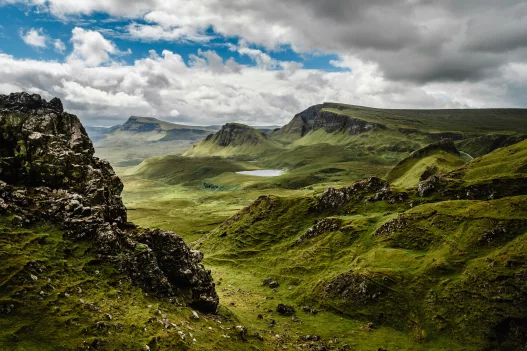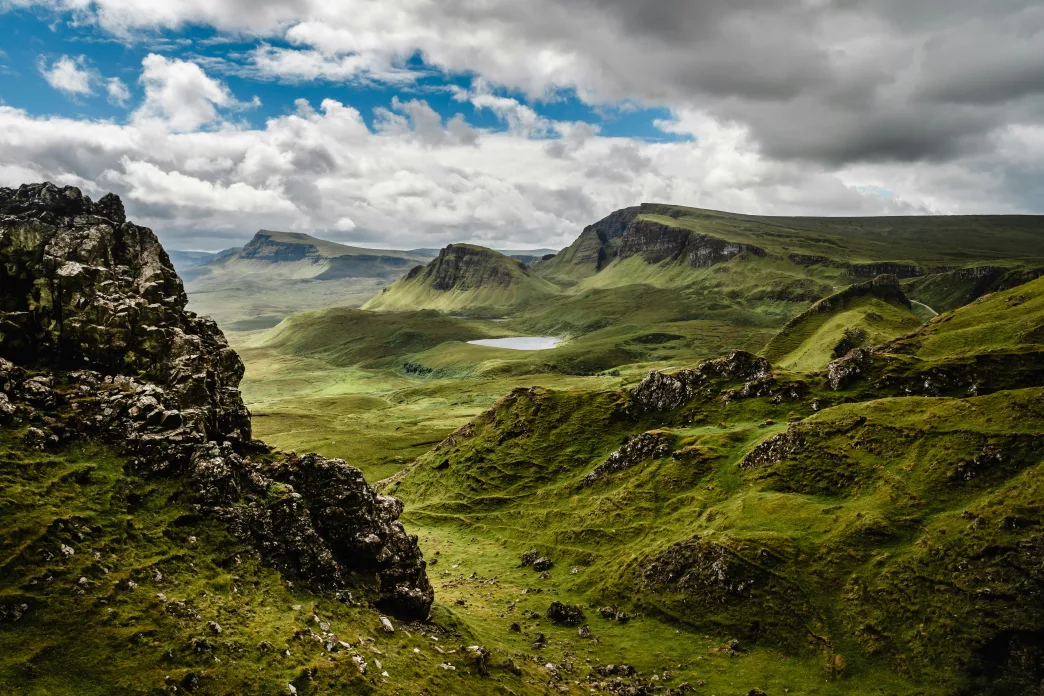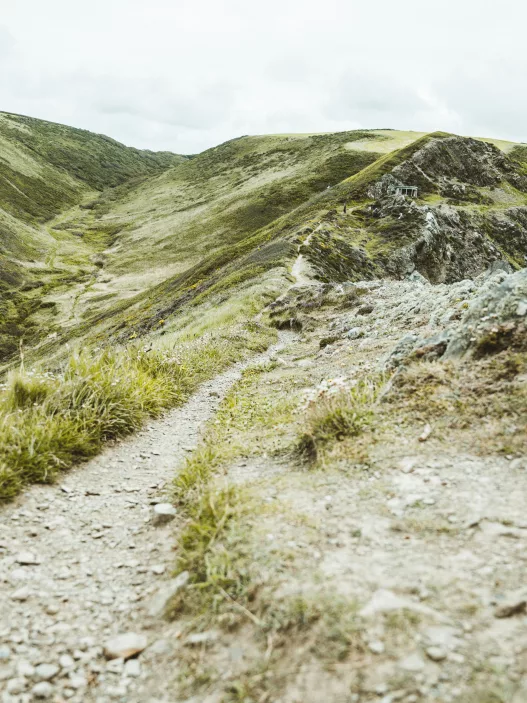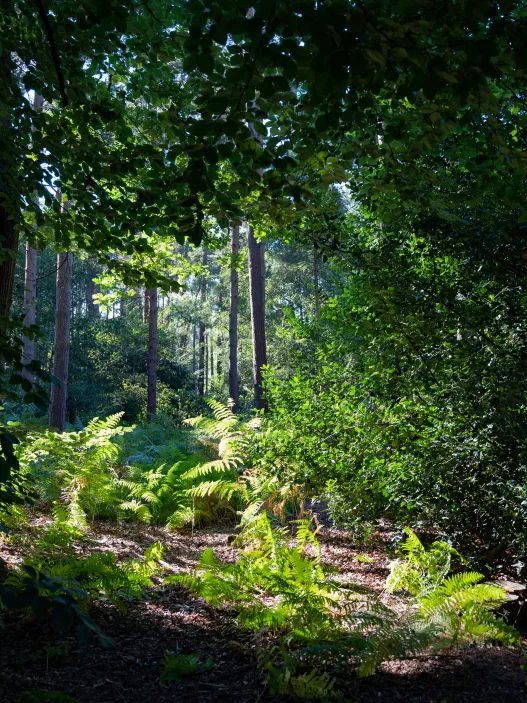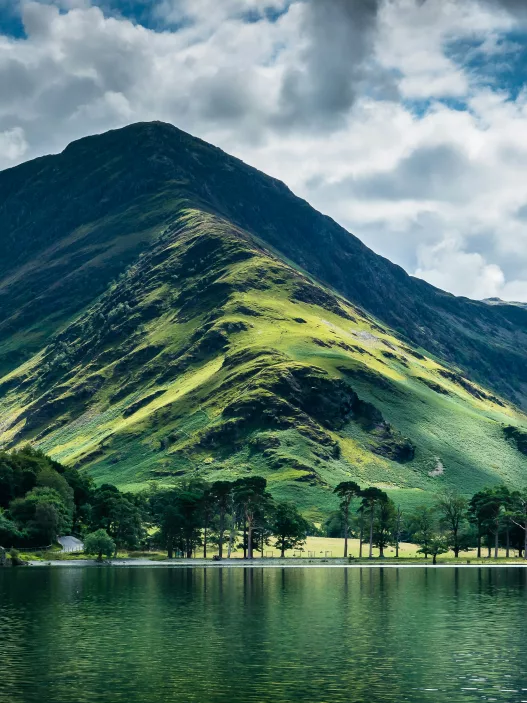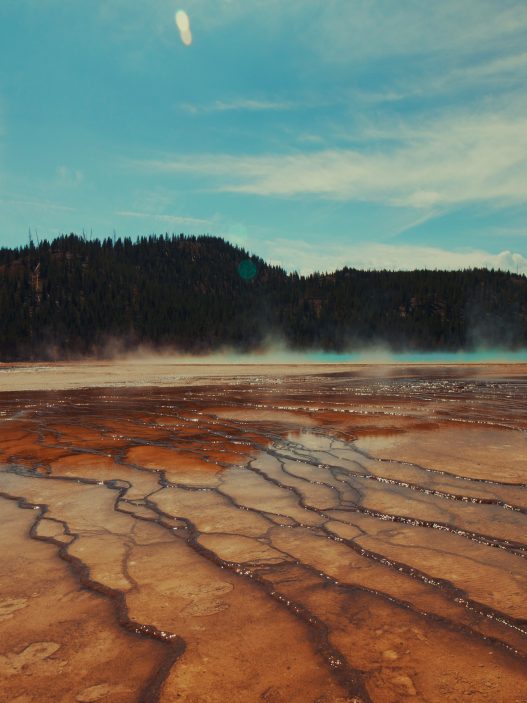Scotland’s Highland wilderness offers some of the most spectacular hut-to-hut trekking experiences in Europe, allowing adventurers to traverse rugged mountain terrain whilst enjoying the comfort of overnight shelter. These multi-day journeys connect remote bothies, mountain huts, and hostels across dramatic landscapes of towering peaks, pristine lochs, and ancient glens.
Hut-to-hut adventures provide trekkers with a unique way to explore the Scottish Highlands over several days without carrying heavy camping equipment, making longer wilderness routes accessible to a broader range of outdoor enthusiasts. The network of accommodation options ranges from basic bothies maintained by volunteers to well-equipped mountain huts with cooking facilities and comfortable sleeping arrangements.
Successful Highland hut-to-hut trekking requires careful route planning, proper gear selection, and respect for the fragile mountain environment. Weather conditions can change rapidly in the Highlands, and navigation skills become essential when crossing remote terrain between accommodation points.
What Are Hut-to-Hut Adventures?
Hut-to-hut adventures involve multi-day treks where walkers stay in mountain huts rather than carrying camping equipment. These journeys connect remote bothies and hostels across Highland routes, offering structured accommodation whilst exploring Scotland’s wilderness areas.
Definition and Key Features
Hut-to-hut trekking is a form of multi-day hiking where participants walk between designated accommodation points rather than wild camping. In the Scottish Highlands, these shelters include bothies, mountain huts, and remote hostels.
The system allows walkers to carry lighter packs since they don’t need tents, sleeping mats, or extensive cooking equipment. Most huts provide basic sleeping facilities and shelter from weather.
Key features include:
- Pre-planned accommodation stops
- Reduced pack weight
- Fixed nightly destinations
- Shared facilities with other walkers
- Basic amenities like bunks and cooking areas
Routes typically span 3-7 days, covering distances of 15-25 kilometres daily. Popular circuits include the Cape Wrath Trail sections and West Highland Way variations that incorporate bothy stops.
Benefits of Hut-to-Hut Trekking
The primary advantage is weight reduction. Walkers eliminate tent, sleeping system, and extensive cooking gear, reducing pack weight by 2-4 kilograms.
Comfort levels increase significantly compared to wild camping. Huts provide protection from Scotland’s unpredictable weather, including driving rain and strong winds common in Highland areas.
Social opportunities emerge naturally as walkers share accommodation. Many bothies foster community atmosphere where trekkers exchange route information and experiences.
Accessibility improves for those unable to carry heavy loads. Older walkers or those with physical limitations can attempt multi-day Highland adventures previously beyond their capabilities.
The system offers reliability during adverse weather. Walkers have guaranteed shelter rather than struggling to pitch tents in storm conditions.
Comparison with Wild Camping
Wild camping requires carrying full shelter and sleeping systems, increasing pack weight substantially. Hut-to-hut adventures eliminate this burden whilst maintaining the wilderness experience.
Equipment differences are significant:
| Wild Camping | Hut-to-Hut |
|---|---|
| Tent, sleeping bag, mat | Sleeping bag only |
| Full cooking setup | Minimal cooking gear |
| Water purification | Often unnecessary |
| Pack weight: 12-18kg | Pack weight: 8-12kg |
Weather dependency varies considerably. Wild campers must find suitable pitching spots and endure exposure. Hut users have predetermined shelter regardless of conditions.
Cost structures differ markedly. Wild camping is free but requires expensive gear investment. Hut stays cost £5-15 nightly but need minimal equipment purchases.
Privacy levels contrast sharply. Wild camping offers solitude whilst huts involve shared spaces with other walkers. Some prefer the social aspect; others value camping’s isolation.
Top Routes for Overnight Hut-to-Hut Adventures in the Scottish Highlands
These four routes offer the most established hut-to-hut networks in the Scottish Highlands, each providing unique terrain challenges and accommodation options. The West Highland Way features bothies and hostels along Scotland’s most famous walking route, whilst the Cape Wrath Trail demands advanced navigation skills through remote wilderness.
West Highland Way Highlights
The West Highland Way provides Scotland’s most accessible hut-to-hut experience over 154 kilometres from Milngavie to Fort William. The route passes through established accommodation points including bothies, hostels, and bunkhouses.
Key overnight stops include:
- Rowardennan Bothy (kilometre 32)
- Inversnaid Bothy (kilometre 45)
- Doune Bothy (kilometre 78)
- Blackwater Hostel (kilometre 112)
The terrain transitions from lowland paths near Loch Lomond to highland moors approaching Ben Nevis. Walkers encounter the challenging Rannoch Moor section between Bridge of Orchy and Kingshouse.
Most hikers complete the route in 5-7 days with planned overnight stops. The path remains well-marked throughout, making navigation straightforward for beginners.
The Cape Wrath Trail
The Cape Wrath Trail stretches 320 kilometres from Fort William to Cape Wrath lighthouse through Scotland’s most remote terrain. This unofficial route requires advanced navigation skills and self-sufficiency.
Essential bothy stops include:
- Meanach Bothy (day 2-3)
- Shenavall Bothy (day 5-6)
- Glencoul Bothy (day 8-9)
- Strathchailleach Bothy (day 10-11)
The route crosses trackless mountains, peat bogs, and river crossings without bridges. Weather conditions change rapidly, requiring full waterproof gear and emergency supplies.
Most walkers need 12-20 days depending on fitness levels and weather delays. The trail demands experience in wild camping and bothy etiquette.
Knoydart Peninsula Expeditions
Knoydart Peninsula offers Britain’s most remote mainland hiking through the “Rough Bounds” region. The peninsula lacks road access, requiring boat transport from Mallaig or Arnisdale.
Primary accommodation includes:
- Barrisdale Bothy (north shore)
- Sourlies Bothy (Loch Nevis)
- Doune Bothy (Loch Hourn)
- Inverie Bunkhouse (village centre)
The terrain features steep ascents over Munros including Ladhar Bheinn and Luinne Bheinn. Coastal paths provide dramatic sea views towards the Inner Hebrides.
Most expeditions last 3-5 days with circular routes possible. The Old Forge pub in Inverie serves as a popular resupply point.
The Affric Kintail Way
The Affric Kintail Way spans 44 kilometres from Cannich to Morvich through Glen Affric’s ancient Caledonian forest. This route combines established paths with remote mountain sections.
Overnight options include:
- Alltbeithe Hostel (kilometre 18)
- Camban Bothy (kilometre 24)
- Falls of Glomach Bothy (kilometre 38)
The path crosses two major passes: Bealach na Sroine and Bealach an Sgairne. Walkers navigate through native pine forests before ascending into alpine terrain.
Most hikers complete the route in 2-3 days. The western section requires careful navigation through pathless terrain above Glen Lichd.
Choosing the Right Adventure for Your Experience Level
Scottish Highland hut-to-hut adventures range from gentle valley walks suitable for newcomers to demanding multi-day expeditions across remote terrain. The key lies in matching route difficulty with personal fitness levels, navigation skills, and mountain experience.
Options for Beginners
The Great Glen Way offers an ideal introduction to Scottish hut-to-hut walking. This 127-kilometre route follows the natural fault line from Fort William to Inverness, utilising canal towpaths and established tracks.
Beginners can complete sections between hostels and bunkhouses without technical navigation skills. The terrain remains relatively flat with minimal elevation gain.
Key features for novices:
- Well-marked paths throughout
- Regular accommodation every 15-20 kilometres
- Village shops and cafés for resupply
- Escape routes to public transport
The Rob Roy Way provides another excellent starting point. This 154-kilometre trail connects Drymen to Pitlochry through gentler Highland scenery.
Accommodation includes traditional inns and purpose-built hostels. The route passes through Callander and Aberfoyle, offering cultural stops and emergency services.
Navigation requires basic map reading skills but follows established waymarkers. Weather conditions prove less severe than higher altitude routes.
Routes for Experienced Trekkers
The West Highland Way northern sections challenge experienced walkers with demanding terrain beyond Bridge of Orchy. This 154-kilometre route includes the notorious Devil’s Staircase and remote Glen Coe crossings.
Experienced trekkers appreciate the varied landscapes from Loch Lomond’s shores to Rannoch Moor’s wilderness. Weather conditions change rapidly, requiring advanced preparation skills.
Essential experience requirements:
- Mountain weather assessment
- Navigation in poor visibility
- Emergency shelter techniques
- River crossing skills
The Speyside Way offers technical challenges through forest paths and moorland sections. This 106-kilometre route requires strong navigation skills between Buckie and Aviemore.
Remote sections between Ballindalloch and Cromdale test self-sufficiency skills. Accommodation spacing demands careful planning with overnight stops every 25-30 kilometres.
Family-Friendly Hut-to-Hut Walks
The Fife Coastal Path eastern sections provide excellent family adventures with regular accommodation. Children manage the gentle coastal terrain between fishing villages like Crail and St Andrews.
Daily distances remain manageable at 8-12 kilometres between hostels and B&Bs. Beach sections offer natural play areas and wildlife watching opportunities.
Family advantages:
- Flat coastal paths
- Regular facilities and shops
- Public transport links
- Safe swimming spots
The Borders Abbey Way creates perfect family expeditions through gentle rolling countryside. This 108-kilometre circular route connects four historic abbeys with comfortable accommodation.
Families appreciate the cultural elements and shorter daily stages. Emergency transport links provide security for less confident young walkers.
Challenging Multi-Day Expeditions
The Cape Wrath Trail represents Scotland’s most demanding hut-to-hut adventure. This unmarked 321-kilometre route from Fort William to Cape Wrath requires advanced wilderness skills.
Experienced mountaineers tackle river crossings, pathless terrain, and extended remote sections. Weather windows prove critical for safe passage through exposed mountain terrain.
Advanced requirements:
- Wilderness navigation expertise
- Self-rescue capabilities
- Extended food planning
- Emergency communication equipment
The Skye Trail challenges expert walkers with 128 kilometres of rugged island terrain. This route demands scrambling skills and weather expertise across exposed ridges.
Remote bothies and wild camping form essential elements between scarce accommodation. Navigation requires advanced skills through complex mountain terrain and frequent weather changes.
Essential Planning and Preparation
Successful hut-to-hut adventures require advance bookings, proper timing, and appropriate gear selection. The Scottish Highlands present unique challenges that demand careful preparation months before departure.
Permits and Booking Huts
Most Scottish mountain huts operate on a booking system through the Mountain Bothies Association (MBA) or individual organisations. Popular huts like Ben Alder Cottage and Corrour Bothy require reservations 3-6 months in advance.
The Scottish Mountaineering Club (SMC) maintains several huts including Charles Inglis Clark Memorial Hut on Ben Nevis. These typically cost £15-25 per night for members and £20-35 for non-members.
Key booking requirements:
- Valid contact details and emergency contacts
- Group size confirmation (most huts accommodate 6-16 people)
- Payment via online systems or cheque
- Cancellation policies vary by organisation
Some remote bothies remain free and operate on a first-come basis. However, these offer basic shelter without guaranteed availability during peak periods.
Best Seasons for Trekking
Late spring (May-June) provides the most stable weather conditions with 14-16 hours of daylight. Snow typically clears from lower elevations by early May, though higher passes may remain blocked until June.
Summer (July-August) offers warmest temperatures but attracts the heaviest crowds. Midges become problematic in sheltered areas, particularly during calm, humid conditions.
Early autumn (September-October) delivers crisp conditions with fewer insects. However, daylight hours decrease rapidly and weather becomes increasingly unpredictable after mid-October.
Winter trekking (November-March) requires advanced mountaineering skills and specialised equipment. Many huts close during this period, and avalanche risk increases significantly above 500 metres.
Packing and Gear Recommendations
Essential clothing items:
- Waterproof jacket and overtrousers (minimum 10,000mm rating)
- Insulating layers (fleece or down jacket)
- Moisture-wicking base layers
- Warm hat and waterproof gloves
Navigation and safety equipment:
- OS Landranger maps (1:50,000 scale) in waterproof case
- Compass and GPS device with spare batteries
- First aid kit including blister treatment
- Emergency whistle and head torch
Overnight essentials:
- Sleeping bag rated to 0°C minimum
- Sleeping mat with R-value above 3.0
- Lightweight camping stove and fuel
- Water purification tablets or filter
Pack weight should not exceed 25% of body weight for multi-day adventures. Sturdy hiking boots with ankle support prove essential on rocky Highland terrain.
Navigating the Scottish Highlands Safely
Weather changes rapidly in the Highlands, maps and GPS devices are essential tools for route finding, and knowing emergency procedures can prevent serious incidents. These three elements form the foundation of safe mountain navigation.
Weather Considerations
Weather conditions in the Scottish Highlands change without warning, particularly above 600 metres. Temperatures can drop by 2°C for every 300 metres of elevation gained.
Seasonal patterns vary significantly:
- Summer (June-August): Daylight until 21:00, temperatures 10-18°C at sea level
- Winter (December-February): Daylight from 09:00-16:00, temperatures -5 to 5°C at sea level
- Spring/Autumn: Highly variable conditions with frequent rain and wind
Walkers should check the Mountain Weather Information Service (MWIS) forecast before departing. The service provides specific altitude-based forecasts for wind speed, temperature, and visibility.
Cloud cover below 500 metres indicates poor visibility on ridges and summits. Winds exceeding 40mph make walking dangerous on exposed terrain.
Map Reading and GPS Use
Ordnance Survey 1:25,000 Explorer maps show essential details including footpaths, bothies, and contour lines at 5-metre intervals. These maps mark rights of way and access restrictions clearly.
Essential navigation tools include:
- Compass with adjustable declination
- Waterproof map case
- GPS device with offline maps
- Backup battery pack
Grid references use the format NN 123 456 in the Highlands. Magnetic declination is currently 1°30′ west of grid north.
GPS devices should complement, not replace, traditional map reading skills. Electronic devices fail in extreme cold or when batteries drain.
Handrail features like rivers, ridges, and valleys provide natural navigation aids. Catching features such as roads or large lochs act as safety boundaries if navigation errors occur.
Emergency Procedures
Call 999 and ask for Police, then Mountain Rescue in emergencies. Provide the six-figure grid reference of the incident location.
The what3words app divides locations into 3-metre squares with unique three-word addresses. Emergency services accept these references when grid references are unavailable.
Essential emergency kit:
- First aid supplies
- Emergency shelter or bivvy bag
- Whistle (six blasts repeated)
- Headtorch with spare batteries
- Emergency food and water
Hypothermia symptoms include shivering, confusion, and loss of coordination. Immediate treatment involves shelter, dry clothing, and gradual rewarming.
If lost, stop moving and use the STOP procedure: Sit down, Think, Observe surroundings, Plan next action. Retrace steps to the last known position rather than continuing forward.
Mountain rescue teams operate 24 hours daily throughout the Highlands. They coordinate with Stornoway Coastguard for helicopter evacuations when weather permits.
Unique Experiences and Wildlife Encounters
The Scottish Highlands offer remarkable opportunities to observe native wildlife species and engage with centuries-old cultural traditions. Hikers frequently encounter red deer, golden eagles, and pine martens whilst staying in bothies that connect them to local communities and traditional Highland cuisine.
Spotting Scotland’s Iconic Wildlife
Red deer roam freely across Highland glens, particularly active during dawn and dusk hours. Stags with impressive antlers become most visible during September and October rutting season.
Golden eagles soar above mountain ridges throughout the year. The Cairngorms National Park and West Highland Way provide excellent viewing opportunities for these magnificent raptors.
Common Highland Wildlife Sightings:
- Red deer (year-round, best at dawn/dusk)
- Mountain hares (white winter coat, brown summer)
- Pine martens (nocturnal, often near bothies)
- Red squirrels (Caledonian pine forests)
- Ptarmigan (high altitude, seasonal plumage changes)
Wildcats occasionally appear in remote areas, though sightings remain extremely rare. Seals frequently visit coastal bothies along the west coast, particularly around Knoydart and Torridon.
Cultural and Historical Highlights
Ancient clan territories mark many hut-to-hut routes through traditional Highland settlements. Stone circles, burial cairns, and abandoned crofting villages dot the landscape between accommodation points.
The West Highland Way passes through Rob Roy MacGregor’s historical territory. Bothies often occupy sites of former shieling settlements used for seasonal cattle grazing.
Historical Features Along Popular Routes:
- Jacobite battlefield sites (Culloden area)
- Medieval castle ruins (Glen Coe, Eilean Donan vicinity)
- Drove roads used for cattle trading
- Whisky smuggling paths through remote glens
Gaelic place names reveal landscape history and navigation clues. Local communities maintain traditional Highland Games and ceilidh gatherings during summer months.
Local Food and Hospitality
Highland bothies provide access to traditional Scottish fare including venison, locally caught salmon, and Aberdeen Angus beef. Village pubs along routes serve hearty meals featuring haggis, neeps, and tatties.
Local distilleries offer whisky tastings near popular hiking routes. The Speyside Way connects multiple distilleries between overnight stops.
Traditional Highland Foods Available:
- Fresh seafood (west coast routes)
- Locally sourced lamb and mutton
- Seasonal berries (blaeberries, rowan)
- Oatcakes and bannocks
- Cullen skink soup
Bothy volunteers often share local knowledge about weather patterns, wildlife behaviour, and historical significance. Many Highland communities maintain honesty boxes for fresh eggs, vegetables, and homemade preserves.
Sustainable Trekking and Conservation
Responsible hut-to-hut trekking in the Scottish Highlands requires careful attention to environmental protection and community support. These practices ensure the preservation of fragile ecosystems whilst benefiting local economies.
Minimising Environmental Impact
Trekkers must follow Leave No Trace principles throughout their Highland adventures. This includes packing out all rubbish, including food scraps and tissues that may seem biodegradable.
The Scottish Outdoor Access Code provides specific guidelines for responsible behaviour. Wild camping requires selecting durable surfaces at least 100 metres from water sources and buildings.
Erosion prevention remains critical on popular routes like the West Highland Way. Walkers should stay on designated paths and avoid shortcuts that damage vegetation. Rocky or gravel surfaces cause less damage than muddy trails.
Water management requires special attention. Trekkers must collect water at least 200 metres from huts and campsites. Biodegradable soap still harms aquatic ecosystems, so washing should occur well away from streams.
Wildlife disturbance can be minimised by maintaining quiet behaviour near deer calving areas between May and July. Red deer are particularly sensitive during this period.
Supporting Local Communities
Hut bookings through organisations like the Mountain Bothies Association and Cairngorms National Park Authority directly fund maintenance and conservation projects. These contributions support trail upkeep and habitat restoration.
Local procurement benefits Highland economies significantly. Purchasing supplies from village shops in Braemar, Aviemore, or Kinlochleven creates employment whilst reducing transport emissions.
Highland estate partnerships often provide accommodation and guided services. Many estates balance conservation with tourism, using visitor fees to fund deer management and woodland restoration programmes.
Transport choices affect local communities substantially. Using ScotRail services to Mallaig or Fort William reduces road congestion whilst supporting regional transport networks.
Frequently Asked Questions
Hut-to-hut walking in the Scottish Highlands offers routes ranging from challenging mountain circuits to luxury guided experiences. These adventures accommodate various fitness levels, ages, and travel preferences across Scotland’s diverse terrain.
What are the best hut-to-hut walking routes in the Highlands for experienced hikers?
The Cape Wrath Trail presents one of Scotland’s most demanding hut-to-hut experiences. This 200-mile route spans from Fort William to Cape Wrath, traversing remote wilderness areas.
The West Highland Way combined with the Great Glen Way creates an extended Highland journey. Experienced walkers can link these routes using bothies and mountain huts.
The Cairngorms Traverse offers technical mountain terrain between Aviemore and Braemar. This route requires advanced navigation skills and mountain experience.
The Skye Trail provides 80 miles of rugged coastal and mountain walking across the Isle of Skye. Weather conditions can change rapidly, demanding experienced hillwalking skills.
Can you recommend any luxury hut-to-hut walking tours in the Scottish Highlands?
Wilderness Scotland operates premium guided tours with comfortable accommodation and luggage transfers. Their programmes include gourmet meals and expert local guides.
Macs Adventure offers upmarket self-guided options with boutique hotels and quality guesthouses. They provide detailed route notes and emergency support.
Absolute Escapes specialises in small-group luxury walking holidays. Their tours feature carefully selected accommodation and fine dining experiences.
Celtic Trails combines walking with luxury lodges and spa treatments. They focus on shorter daily distances with enhanced comfort levels.
Are there any Scottish Highlands hut-to-hut adventures suitable for solo travellers?
The West Highland Way provides excellent solo walking infrastructure. Numerous accommodation options and regular resupply points ensure safety and convenience.
Youth hostels along major routes offer affordable solo accommodation. The Scottish Youth Hostels Association operates facilities on popular walking routes.
Guided group tours welcome solo participants. Companies like Absolute Escapes and Wilderness Scotland regularly accommodate individual travellers.
Mountain bothies provide free shelter for experienced solo walkers. The Mountain Bothies Association maintains these basic shelters throughout the Highlands.
Which companies offer all-inclusive hut-to-hut walking holidays in Scotland?
HF Holidays provides comprehensive packages including accommodation, meals, and guided walks. Their programmes cover various Highland regions with qualified leaders.
Ramblers Walking Holidays offers fully inclusive group tours. They handle all logistics from accommodation to luggage transfers.
Wilderness Scotland creates bespoke all-inclusive experiences. Their packages include expert guides, quality accommodation, and gourmet meals.
Celtic Trails organises complete walking holidays with luxury touches. They provide detailed pre-departure information and full support throughout.
How do you prepare for a self-guided hut-to-hut walking tour in the Scottish Highlands?
Physical preparation requires regular hill walking with a loaded rucksack. Cardiovascular fitness and leg strength prove essential for Highland terrain.
Navigation skills including map reading and compass use are crucial. GPS devices provide backup but should not replace traditional navigation abilities.
Weather-appropriate clothing includes waterproof layers and warm insulation. Highland weather changes rapidly, requiring comprehensive kit preparation.
Route planning involves booking accommodation well in advance. Popular routes fill quickly, especially during summer months.
What are the options for hut-to-hut walking tours in Scotland that cater to those over 50 years of age?
Senior-friendly tours typically feature shorter daily distances and comfortable accommodation. Companies like HF Holidays specialise in age-appropriate itineraries.
Guided group tours provide additional safety and social interaction. Professional leaders adjust pace and routes to group capabilities.
Luxury tour operators offer enhanced comfort levels with spa treatments and quality dining. These reduce physical stress whilst maintaining walking experiences.
Self-guided options allow flexible pacing and rest days. Accommodation booking services enable personalised itinerary planning for mature walkers.


